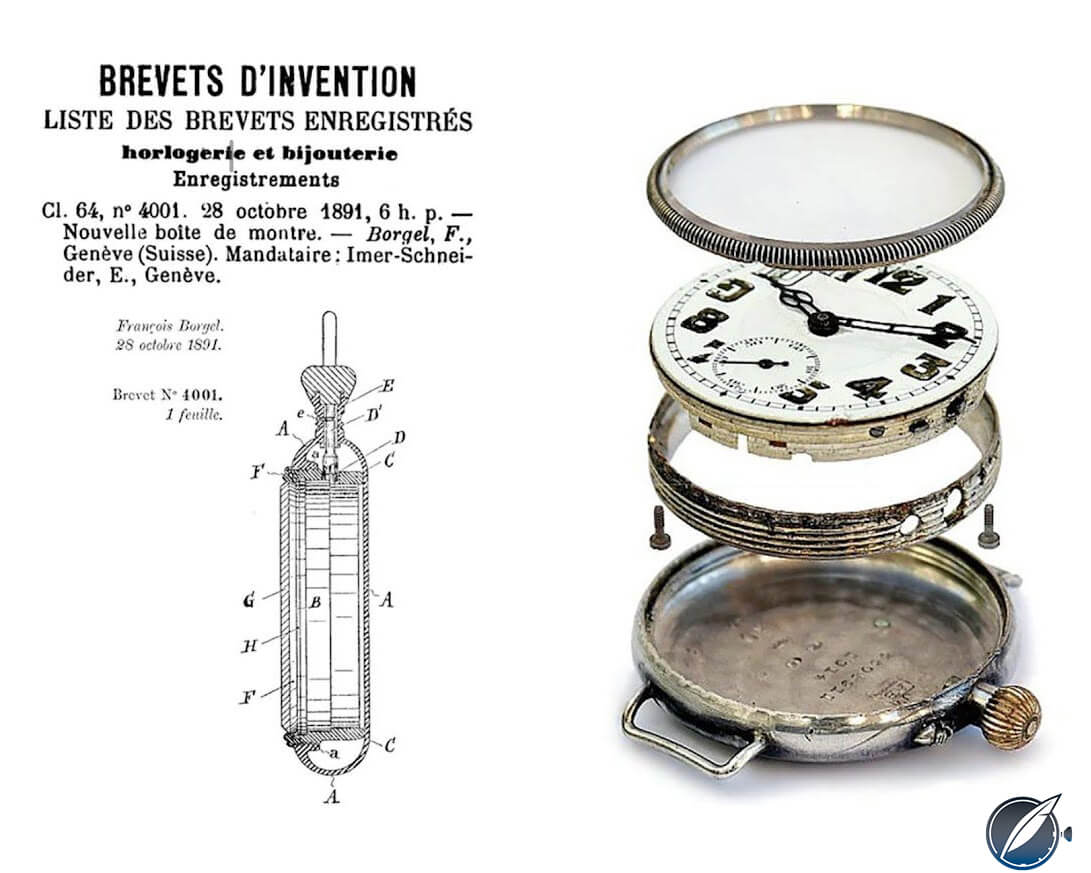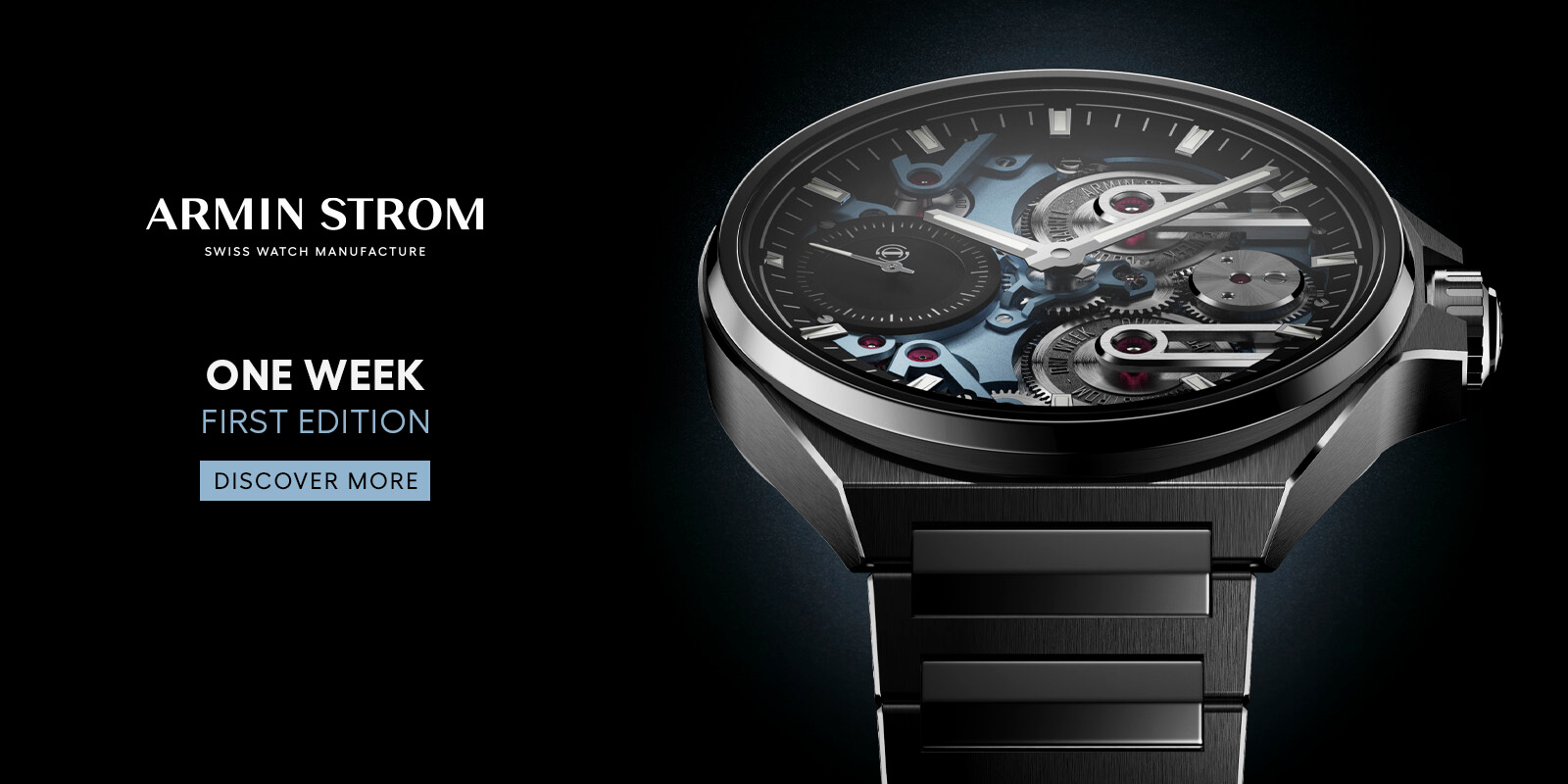History of Divers’ Watches: Voyage to the Bottom of the Ocean
The origins and evolution of the diver wristwatch
It is often said that it is easier to send a person to the Moon than to the ocean floor because of the extreme conditions found at great depths, such as no visibility and overwhelming pressure.

1960 Rolex Deepsea Special
However, in 1960 a wristwatch (Rolex “Deep Sea Special”) accompanied mankind to the deepest ocean floor even before it accompanied mankind to the Moon in 1969 (Omega Speedmaster Moonwatch).
Diving watches constitute a watch category of their own similar to aviator watches, sports watches, and complications. With few exceptions, every luxury brand offers a line of diver watches, with water resistance ranging from 100 to 300 meters, and with some models even exceeding 600 meters.
Three historical periods have contributed to the development of the diver wristwatch, as we know it today: the development of the waterproof pocket watch during the second half of the 19th century, World War I, and the scientific marine expeditions of the 1950s.
The origins of the water resistant watch
With the Industrial Revolution, the watch became a common good. It was no longer a status quo accessory for the few, but became a utilitarian object for the masses, and a tool for professional and scientific groups such as military personnel, aviators and explorers, doctors and engineers.
During the second half of the 20th century, several inventions in both the USA and Europe considerably improved the water resistance of pocket watches.
————————————————————————————————————–
—————————————————————————————————–
The first historical reference to a waterproof pocket watch can be found in London in 1851, during the Great Exhibition of the Works of Industry of Nations. As reported in the local newspapers, during the exhibition, a company named W. Pettit & Co showcased a watch suspended in a basin filled with water and declared that it was completely waterproof.

1884 Ezra C. Fitch patent for a waterproof watch bezel
Two decades later, American watchmaker and inventor Ezra C. Fitch filed a patent claiming the world’s first waterproof bezel. In 1879, he then filed a patent for a waterproof pocket watch with a case and the case back that were one piece, the bezel was screwed onto the case, and the crown had a removable cap. The removable cap encapsulated the crown, thus reducing the infiltration of dust and water into the case.
Similar patents were filed in the UK and Switzerland. For example, in 1883, in the UK, Alcide Droz & Fils improved on the inventions of Ezra C. Fitch of 1879 and 1881. The British company filed a patent for a waterproof pocket watch with a non-opening case back, a bezel and a crown screwed onto the case, and claimed it provided better protection to the movement from dust and water infiltration than Fitch‘s solution.
—————————————————————————————————–
—————————————————————————————————–

Francois Borgel’s 1891 patent for a water-resistant watch case
In Switzerland in 1891, the watch case manufacturer Borgel of Geneva filed a patent for a one-piece waterproof case, where the movement was screwed into the case through the front and then sealed with a tightly fitting bezel and glass.

Advert for the Depollier/Waltham waterproof wristwatch
A 1914 trade magazine advertisement shows that Borgel‘s waterproof cases were already compatible for both pocket watches and wristwatches. Borgel supplied its waterproof cases to brands such as IWC and Longines during World War I, as well as to Rolex in the 1920s.
At the turn of the 20th century, all the features that made the 1927 Rolex Oyster revolutionary had already been invented for pocket watches.
Wartime Developments and the “Oyster” Case
The wartime demands of World War I inspired further developments in waterproof technology, as soldiers at the front required watches that were practical, waterproof, and durable. These developments were made possible through collaborations between watchmakers and the military. Important examples of these collaborations were Tavannes and Depollier.
In 1917, a collaboration of British naval officers and the Swiss company Tavannes Watch & Co launched a waterproof wristwatch called the “Submarine.” The watch was initially created to be suitable for use aboard submarines. Its case was anti-magnetic. The case back and the bezel were screwed onto the case, and the presence of compressible gaskets ensured the water-tightness of the case.
The crown also had a compressible gasket in its stem tube to prevent water seepage. The balance wheel was made of a material insensitive to temperature variations, and the dial was readable in all light conditions.
—————————————————————————————————–
—————————————————————————————————–
On the other side of the Atlantic, in 1918, in collaboration with the U.S. Army, watchmaker Charles Depollier developed the Waltham Field & Marine Trench watch, which was advertised as waterproof and capable of surviving the hardships of trench warfare.

Waltham Field & Marine Trench watch from 1918
The watch featured a double bezel, a hermetically sealed screwed-on case, a crown screwed onto the case, and a key to be used to tighten the case and case back to a watertight seal. Depollier’s case was tested and certified as water-resistant by the U.S. National Bureau of Standards and a patent was filed.
Enter the Rolex Oyster Case
Post WWI, two Swiss watchmakers, Paul Perregaux and Georges Perret, patented a screwed-on crown that ensured a water-resistant case even when the crown was pulled to adjust the watch. In 1926 Hans Wildorf, founder of Rolex, bought the rights to the Perregaux/Perret invention and the following year he introduced the Rolex Oyster to the world.
Learning from the many inventions that had occurred in the previous 60 years and improving on them, the Rolex Oyster featured a case in which the crown, bezel and case back were screwed onto the case, effectively sealing it from water and dust infiltration.
The crown, in particular, was designed so that by pressing and screwing it down at the same time, a sealing ring, which was located inside the crown, was compressed against the case, ensuring resistance to water infiltration. This case was given the name “Oyster,” in clear reference to the waterproof shell of oysters. The Oyster case became the first commercially viable waterproof solution.
—————————————————————————————————–
—————————————————————————————————–

1927 Rolex Oyster advertisment
The Oyster watch was publicized in the London’s Daily Mail newspaper with a photo of British swimmer Mercedes Gleitze wearing the Oyster watch around her neck, as she crossed the English Channel in 1927.
In 1931, Rolex introduced the self-winding movement (Oyster Perpetual), a very important development because it removed the need to daily activate the crown to wind the watch.
This innovation reduced the risk of water and dust infiltration and improved the longevity of the watch’s internal mechanisms.
The ad in the Daily Mail presented the Rolex Oyster as a watch that met the definition of water resistance at the time: thus resistant to a depth of only a few meters. The original Rolex Oyster and the watches that came before it were never designed to be diver’s watches.

Omega Marine from 1932
But this changed in 1932, when Omega presented to the world the first wristwatch tested and qualified for diving, not simply waterproof, by the Swiss watchmaking laboratory in Neuchatel. The watch was called the “Marine” and was certified water-resistant to 135 meters.
Unlike the many waterproof solutions adopted earlier, the Marine featured a cork-sealed double case, had a sapphire crystal, one of the first watches to do so at the time, and it used an adjustable strap with a diving extension. Prior to 1932, prototypes of the Omega Marine had been worn and approved by personalities such as Commander Yves le Prieur, the inventor of scuba diving. However, the Omega Marine was an expensive watch to produce and never became commercially viable, unlike the Rolex Oyster.
Birth of the divers’ watch
The decade of the 1950s was a period of scientific marine explorations, and great discoveries, in search of the boundaries of mankind’s knowledge of the underwater world. Jacques Cousteau’s excursions and his television documentaries increased the popularity of scuba diving. Leisure and commercial diving gave rise to organizations of professional and amateur divers, which increased the demand for watches designed for diving rather than for simple water resistance.

Doxa SUB 300 Carbon Aqua Lung US Divers
Vulcain, Breitling, Jaeger LeCoultre, DOXA, Squale, and Zodiac are just some of the brands that invested in the development of diver watches during this period. They developed new designs, tested innovative technical solutions, and created iconic watches that are still in high demand today as vintage models.
—————————————————————————————————–
—————————————————————————————————–
The year 1953 marked the birth of the diver watch: the Blancpain Fifty Fathoms. This was a watch that set the design and functional features for the archetypal of the modern diver watch. The Fifty Fathoms was born out of a collaboration between Blancpain and the French Navy.

Original Blancpain Fifty Fathoms from 1953
It featured a unidirectional rotating bezel (anti-clockwise) and its water resistance was guaranteed to a depth of 100 meters. The development of the Fifty Fathoms laid the foundation for the testing of diving watches, which later became part of the international standard ISO 6425 (see Note 1)
The modern luxury diver watch
Diver watches combine high quality technological content with pleasing aesthetic elements and can be worn for different purposes: casually, at the office; as sports watches during a boat trip or a regatta; when swimming in the lake or scuba diving.

Singer Reimagined Divetrack: the world’s first true diver’s chronograph
The development of the mechanical diver watch is the result of 170 years of evolution, which occupies an important role in the history of watchmaking. The mechanical diver watches of the 1950s were the first generation of a series of instruments that supported the exploration of the underwater world, as well as the recreational and commercial diving activities of the second half of the 20th century.

The versatile diver’s watch
Since then, modern digital watches and laptop computers have replaced mechanical diving watches. The new digital instruments provide many more functions and information to divers, during their activities. Nevertheless, it is a well known fact that many enthusiasts and professional divers continue to use and trust a mechanical watch as a backup to their digital watches.
The ISO 6425 standard identifies the minimum requirements that a watch must meet to officially qualify as a diver watch, and carry the inscription “Diver’s Watch” on the case back. It was first published in 1982. The most recent edition of the standard was published in 2018.
Key requirements:
- The case must withstand pressure of at least 10 atm, corresponding to a depth of 100 meters.
- Screw-locked case back.
- Screw-locked crown.
- Glass can be made of technopolymers (plastic), sapphire or mineral.
- Unidirectional anti-clockwise bezel with time indicator: a minute scale up to 60 minutes, with clear markings indicating every 5 minutes.
- Helium escape valve for dives over 300 meters.
- Hour markers and hands with a luminescent layer.
* This article was first published in “La Rivista” magazine in June 2022.
You might also enjoy:)
Blancpain Fifty Fathoms Documentary: Story Of The World’s First Diving Watch (Video)
Blancpain Fifty Fathoms Automatique: Time to Move on From the Rolex Submariner?
Diving with the Ball Watch Engineer Master II Diver Chronometer
The Diving Bezel: The Most Versatile Watch ‘Complication,’ Even If You’re Not A Diver






Leave a Reply
Want to join the discussion?Feel free to contribute!